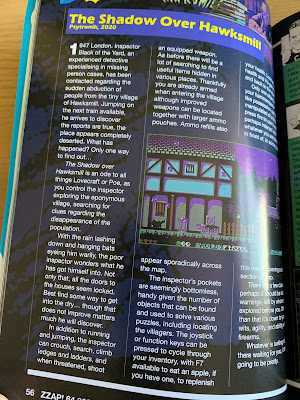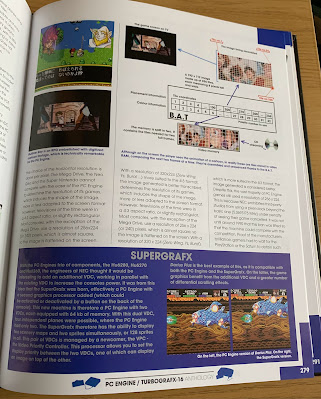Regular readers will know that I am quite partial to films based on video games. Even though I can be quite scathing and waspish, there is usually still enjoyment to be found somewhere... and yes, even in Resident Evil: The Final Chapter. However, whilst there are some very famous examples, there are also more obscure titles, and this is where Chris Carton's excellent tome comes in.
A Guide To Video Games Movies does pretty much what it says on the cover, providing a well-written and informative directory of all game-based celluloid treats from the 1990's onwards. Divided into four sections, (1990's 2000's, 2010's and 2020's), Carton details nearly fifty films that, whilst they may be only very loosely based on their source material, are video games movies.
Each entry starts with a film promo poster and a details box giving release date, director(s), cast and tagline. The main entry begins with a brief background to the original gaming inspiration, followed by a description of the film and a comment on the quality alongside its critical and financial success. You then get a one liner reason as to why you should watch it and a brief note on whether a sequel followed up (or is likely). You also get a screenshot of the original game and a couple of shots from the film.
At the end of each section are a couple of pages for the best of the rest, titles that may not have seen a wide release or were smaller scale features.
I found this to be a fun read, the author providing a great look at each featured title without (much) sarcasm. If you want sarcasm, check out the Was That Film Really That Bad series on this blog. The author clearly demonstrates a love for the genre and a passion that resonates throughout this book, evident by the author's reasons to watch each film. I had completely forgotten about the "7 Seconds" event(!) in Alone in the Dark, and for that reason, I really need to watch that film again! There are some titles that I have never gotten round to watching, as well as some that I never knew about, and the joy of this tome is that I now have a list of games-based films to add to my collection.
Indeed, whilst the general quality of video game films is rarely high, they always seem to have a certain charm and Carton displays that charm superbly here. Not sure if the use of the word "charm" will survive a viewing of Postal, but hey, I'd need to watch it to have an opinion. Whilst this book doesn't cover films inspired by video games, that could be an option for a future volume... hint, hint...
As you can see from the pictures, this tome is laid out cleanly and provides more than enough space for the images and text to breath. Production quality is high and it fits very well next to Daryl Baxter's superb Tomb Raider book. This is yet another quality release from White Owl, an imprint of the ever reliable Pen & Sword Books, and is a celebration of that much-maligned cinematic genre that deserves to get some love and attention. Chris Carton has proven to be the right person for that job!
Do I like this book? Yes! If you are a gamer who also likes films, should you buy this book? Hell, yeah! Would you enjoy watching all of the films featured in here? No idea, but what reading this book has done is prompted me to start searching for the films I don't already own to give them a go. And hey, if they're that bad, they'll get a WTFRTB post.
You can pick up a copy of A Guide To Video Games Movies directly from the publisher here or order it from that online place or your local bookshop. You can also follow the author on Twitter here, where you'll also be able to find out about future titles.


































